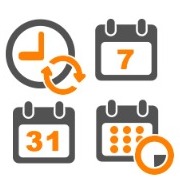Companies are struggling with the need to move their business online rapidly wherever possible in order to survive during the coronavirus crisis and to plan for new post-pandemic behaviors by consumers.
New consumer purchase behaviors are evolving quickly including increased online shopping, heightened delivery expectations, wide-ranging supply chain impacts, and growth in the number of work-from-home employees.

For those companies fortunate enough to move essential parts of their business online, one of the biggest challenges now is meeting the delivery expectations of customers.
Companies like delivery optimization experts Route4Me are stepping up to help companies deliver products faster, more efficiently, and most importantly, less expensively by using sophisticated software to improve delivery rates and logistics.
COVID-19 e-commerce everywhere
Nonessential business closures due to coronavirus are still mostly in place across the US, although some states are proposing guidelines for reopening. Here’s are some key logistics insights from the COVID-19 crisis to consider:

- online sales jumped 49% between March 12 and April 11 according to Adobe Analytics
- curbside delivery pickup at the stores jumped 208% between April 1-20 (Adobe)
- Amazon hired more than 100,000 people since March 16 and is still looking to hire more than 75,000 additional workers
- Amazon has increased order capacity by 60% due to COVID-19
- Instacart said it’s looking for as many as 300,000 gig workers to help pick and deliver groceries
- Best Buy retained 70% of sales through e-commerce (for nine weeks through April 4) despite its retail stores being closed since Mar 22.
In almost every case, businesses big and small are suffering lengthy delays in customer delivery of goods bought online, often surpassing weeks or even longer.
Delivery challenges and insights

With more than 23,000 global customers and nearly 2,000,000 downloads of its mobile app, Route4Me has some valuable insights into the delivery challenges faced by business.
Route4Me Cofounder and CEO Dan Khasis explained, “Many of the delivery problems existed before COVID-19 and they have been amplified because of the pandemic.” Among the biggest challenges he cited are:
- home delivery/home service was optional prior to COVID; now it’s mandatory
- businesses are being forced to adapt quickly in order to survive
- many businesses have never done home/location delivery; this is all very new to them.
“Many of the business owners are passionate about their actual business, but logistics optimization is totally foreign to them, because it was never needed, and it is quite complicated to carry out,” Khasis said.

Among the potential solutions to the logistics and delivery challenges are implementing better technology such as using mobile apps that can accommodate different business rules.
Route4Me highlighted some of the ways businesses are responding to the unique problems of supply chain and delivery during the coronavirus crisis including:
- grocery stores now delivering direct to customers
- farms also delivering direct to customers
- some restaurants now offering catering, selling prix fixe menus to local residents
- businesses reshaping their client territories due to a high level of cancellations, to improve service density.
Logistics impacts from coronavirus
The logistics industry is at the heart of business impacts caused by COVID-19.

In its Q1 2020 results, UPS reported quarterly revenue of $18 billion, up 4.9%. Net income of $965 million was down 13.2% impacted partly by coronavirus, and overall economic slowdown, and higher self-insurance costs. UPS Chairman and CEO David Abney said consumer delivery demand rose, particularly in healthcare and essential product purchases.
“By late March, residential deliveries approached nearly 70% of our volume and drove increased delivery costs, a trend we are seeing continue in April. Most economists are currently predicting a recession, but there is broad disagreement of the length and shape of the recovery,” Abney added in the company’s analyst call.
FedEx reported a Q3 2020 (Jan-Mar 2020) slight sales decrease of 1% to $8.92 billion as a result of a 5% decline in freight revenues caused primarily by the economic slowdown. FedEx suspended its earnings outlook for fiscal 2020 due to the coronavirus-led uncertainty, signaling that logistics companies can expect to report substantial impact in Q2 2020.
What will the “new normal” look like?
One of the biggest barriers facing owners and managers is finding the best path forward to reopening their businesses, particularly as consumers may now be much more focused on online shopping and fast deliveries.

“All businesses will need to have home delivery/home service on the backburner at all times, for repeat pandemic recurrences,” Khasis suggested. “This will cost them more money but will also make them more money too.”
Like other fortunate businesses during the coronavirus crisis, Route4Me has seen growth in new customers, sales, and revenue despite the challenges. “Coronavirus has increased things for us across all our metrics, as businesses run to adapt to this new reality,” Khasis said.
It all adds up to a more complex business environment in the future – one that’s more dependent on e-commerce supported by fast, economical, and efficient delivery and logistics across most business sectors. July earnings reports are going to be a fascinating and much more accurate picture of the coronavirus impact on the economy.








LET’S CONNECT